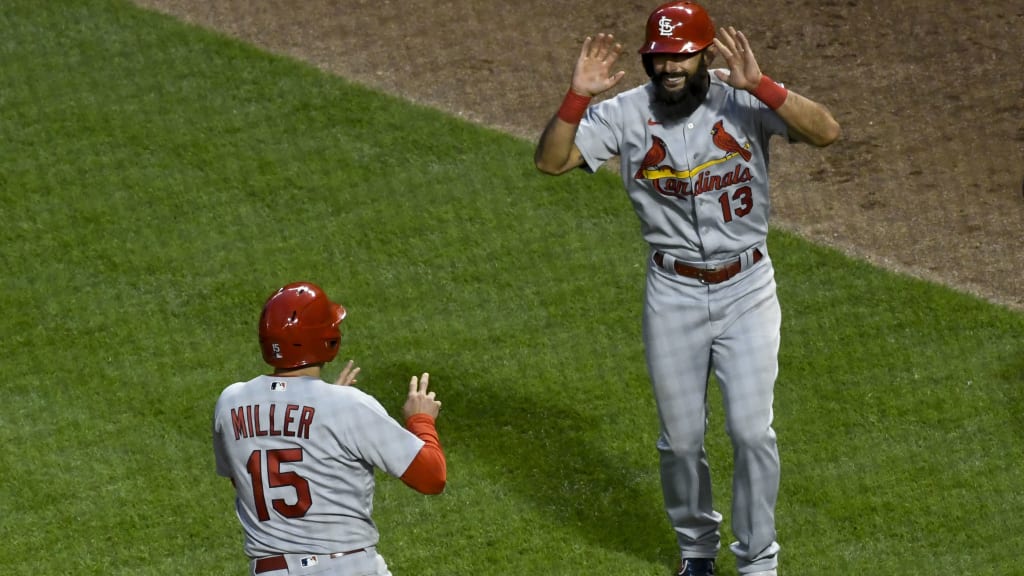
This has been a season of radical changes in baseball, some temporary and some potentially more permanent. On Monday evening, Cardinals second-baseman Brad Miller hit two home runs … as a designated hitter … in the National League ... for the home team … wearing road gray uniforms … at Wrigley Field. The Cardinals have the opportunity today for a walk-off win at Wrigley Field, which is a sentence that makes less sense to me the more I look at it. There isn’t much about this year that isn’t odd. I’m just sort of relaxing and going with it, because it’s honestly just nice having baseball at all.
Some of these oddities seem likely to last beyond this season, and some of them are surely just conveniences to get us through a compact schedule. But they’re all fascinating: They’ve taken a game I’ve watched my entire life and shaken it up a little. I’m not sure how I feel about all of them, but they’re absolutely riveting.
The two most controversial rule changes for 2020 -- I don’t consider the added playoff teams particularly controversial; if your team ends up making the playoffs, trust me, you’ll find adding new teams terrific -- have been the placement of an automatic runner on second base in extra innings and the shortening of games during doubleheaders to seven innings. I reflexively scoffed at each of these, particularly the idea of a runner taking over second base, as if dropped from the sky, or perhaps sprung up from a trap door under the stadium. But this rule has, surprisingly, been received with widespread applause, from MLB.com's Anthony Castrovince to ESPN’s Sam Miller to The Washington Post’s Thomas Boswell, the bard of this sort of thing.
But I haven’t, in my reading travels, seen nearly as much vocal defense of the seven-inning doubleheader rule. Which is a shame, because I think I like it even more than the extra-inning rule. It is actually sort of remarkable that it has never happened before in the Majors (it is common in the Minors and in college baseball). It is time for an equally vigorous defense of the seven-inning doubleheader.
1) You can fit in two baseball games in about four-and-a-half hours
One of the most common arguments naysayers make against baseball is that the games are too darned long. I never entirely understood this argument -- if you like baseball, you generally want more of it; if you think games are too long, in my mind, you’re basically just saying you don’t like baseball -- but even allotting its larger point (four hours is a long time to sit in one place), if you’re going to commit yourself to four hours watching baseball, you might as well get two games out of it rather than one. Shortening games to seven innings lets you fit two in, oftentimes in the same time span as it can take to play one. A Cardinals-White Sox doubleheader on Saturday finished in about four hours and 20 minutes. That’s bang for your viewership buck.
2) You start sitting up in your chair around the fourth inning
Typically in a baseball game, the fourth inning is when you first start to stretch your legs. It’s too early to be truly urgent, but too late for that initial surge of excitement. It’s the “Settling In” period. But in a seven-inning game, there is no settling in. In the fourth inning, you are already in the closing stretch. You have to start seriously paying attention in the fourth, the same way you usually do in the sixth. This makes the game feel all a part of one piece, rather than separate strains spliced together. It also is familiar to anyone who has ever been involved in Little League Baseball, which is usually played over six or seven innings, making every frame count that much more. By definition, every pitch in a seven-inning game matters more than one in a nine-inning game. You can’t look away even for a minute.
3) It gets rid of the two worst innings
In every baseball game, there are two innings where nothing happens and nobody remembers them. Even the greatest baseball games have these innings. Who remembers the bottom of the fourth in Game 7 of the 2016 World Series? Or the top of the third in Game 6 of the 2011 World Series? If you feel like you are missing two innings of action, the truth is you probably aren’t. If anything, the urgency of each inning of a seven-frame game makes it more likely you’ll get action in a certain inning than others. This is the best way to think of this: Everybody forgets a couple half innings a game by the time they get to the ninth. This season's doubleheader format gets rid of a few of these without you even noticing.
4) It actually encourages pitcher health
It has been fascinating to see the number of openers used or bullpen games in doubleheaders, and that makes sense. Bullpen games are about piecing together innings however you can just to make it to the end, and that’s obviously easier to do in a seven-inning game than one with nine. But not only is this more interesting -- you just simply get to see new people -- many baseball observers and medical professionals have long argued, as documented in Jeff Passan’s excellent book The Arm, that pitchers are more in danger of injury from being overused in one individual appearance than having concise, regular appearances. That’s to say, the theory goes: Pitchers’ arms are more likely to be hurt by throwing too many pitches in one appearance than pitching too many days in a row. There’s no reason to push a starter too long in a seven-inning game; heck, even if they’re going for a no-hitter, it won’t actually count as one in the record books. Baseball has long been trending toward a game with specialists and quick-hit flamethrowers. Shortened games steer into that skid: It plays up something the game already has going on.
5) It encourages the scheduling of more doubleheaders
Do you know how many baseball games there are on Wednesday? 17! That’s a lot of baseball, and remember the fundamental rule of the game: More baseball is better than less baseball. Doubleheaders are fun, but they’re not just that: They’re efficient. Tellingly, when the Cardinals had to reschedule all their games, they actually requested to have a doubleheader against the Twins followed by a day off rather than having games on consecutive days; they’d play the twin bill and take the off-day afterwards. Doubleheaders provide scheduling flexibility, they free up days of rest and travel and they’re double the excitement in one day. When you shorten each game to seven innings, you make it more feasible for players to want to play them, and you keep them healthier. It’s a win-win for everyone.
I do not know if MLB will continue seven-inning doubleheaders beyond 2020. But if they were looking at this year as a potential test run, consider this test passed. Ernie Banks would be proud. Let’s play two.
